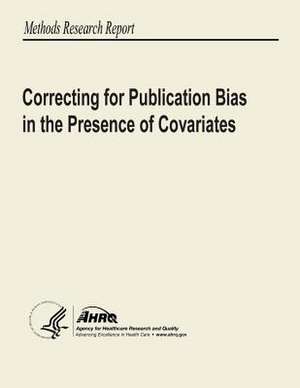Correcting for Publication Bias in the Presence of Covariates
Autor U. S. Department of Heal Human Services, Agency for Healthcare Resea And Qualityen Limba Engleză Paperback
Preț: 134.09 lei
Preț vechi: 141.14 lei
-5% Nou
Puncte Express: 201
Preț estimativ în valută:
25.67€ • 26.73$ • 21.30£
25.67€ • 26.73$ • 21.30£
Carte disponibilă
Livrare economică 22 ianuarie-05 februarie
Preluare comenzi: 021 569.72.76
Specificații
ISBN-13: 9781484997178
ISBN-10: 1484997174
Pagini: 118
Dimensiuni: 216 x 279 x 6 mm
Greutate: 0.29 kg
Editura: CREATESPACE
ISBN-10: 1484997174
Pagini: 118
Dimensiuni: 216 x 279 x 6 mm
Greutate: 0.29 kg
Editura: CREATESPACE
